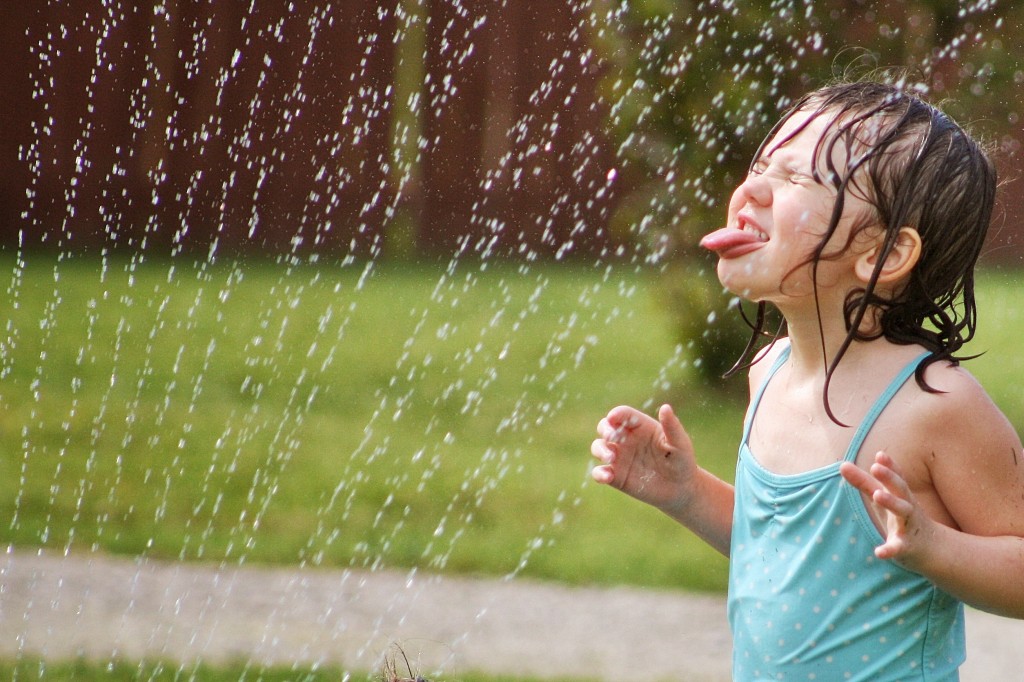Dirty Suburban Water
 Not far from where I live in a typical middle class suburb of Vancouver, BC, there lies a stagnant pond. Look up “swamp” in the dictionary and that’s what it looks like. I often joke that that’s my pool. But in fact, I wouldn’t swim in it. I wouldn’t tip toe in it. I certainly would never, ever drink it.
Not far from where I live in a typical middle class suburb of Vancouver, BC, there lies a stagnant pond. Look up “swamp” in the dictionary and that’s what it looks like. I often joke that that’s my pool. But in fact, I wouldn’t swim in it. I wouldn’t tip toe in it. I certainly would never, ever drink it.
Why would I? For me, dirty drinking water means there’s a fuzz floating in my glass. On a hot day, I can run a cool bath, go to the local pool, or run through the sprinklers. I use water to rinse my mouth. I sip it, gurgle with it, and spit it out.
That dirty pond, the breeding ground for mosquitos that will draw my ire come summer, is a self-deprecating joke for me. But for many communities, that is all the water there is.
And still the situation doesn’t compare, because to get to my dirty water hole, all I have to do is walk out of my apartment and there it is. Imagine if I had to walk for hours every day to fill every available bucket with that? And then I had to walk for hours back to my home dragging every available receptacle filled with that? And then I had to cook with that and feed my children who were already sick from the water I’d brought back yesterday? But I don’t have a choice and they have to drink.
A WATER CRISIS
This is not a hypothetical scenario.
Back in 2009, Adjarra Hounve, a village located in Benin, West Africa, was one of those communities being suffocated by dirty water. The village’s only source of water was an old, polluted, hand-dug well. The dirty water caused diarrhea, which led to rapid dehydration and if it left untreated, to death. Like everyone else in her village, Jeanne Ehuzu, a 40-year-old mother of six, gathered this water every day even though she knew it would make her family sick.
But she didn’t have a choice.
Today, thousands of people like Jeanne will spend hours collecting the only water they can find – often from stagnant ponds or old hand-dug wells. Their families will suffer and get sick. They will not go to school or be able to work in their communities and entire generations will suffer, struggling just to stay alive.
WATER FOR LIFE INITIATIVE
In 2009, Global Aid Network (GAiN), the humanitarian partner of Power to Change, went to Adjarra Hounve and dug a new well, bringing fresh clean water to the entire village. This was the organization’s 100th well.
Far more importantly though, the well became a source for the villagers’ hope. For the first time, their entire livelihoods didn’t depend on a cesspool. No longer did they have to choose to get sick in order to survive. The deep-capped well brought new vitality to Adjarra Hounve.
A WATER REVOLUTION
There are many stories of hope similar to Adjarra Hounve. But there are many more that have yet to be written.
The age of social media is the age of ambient awareness. We are more aware of injustice, inequality and iniquity than ever before. Every week is dominated by a new #hashtag that voices our immense displeasure at the state of the world. But in the proliferation of awareness has come the burden of choice, and choice is petrifying. When faced with the question: “Will I act?” how often is my answer to just scroll down?
3.4 million people die each year from water-related diseases while we’re stuck between Pepsi or Coke.
Would you partner with GAiN and bring fresh, clean water to villages that desperately need it?
Leave a Reply
STAY CONNECTED



Power to Change Newsletter
Most Recent
An Identity CrisisMeet DRIME’s new director
This Christmas, strengthen a marriage
This Christmas light up a city

 Visit or contact us at:
Visit or contact us at:
